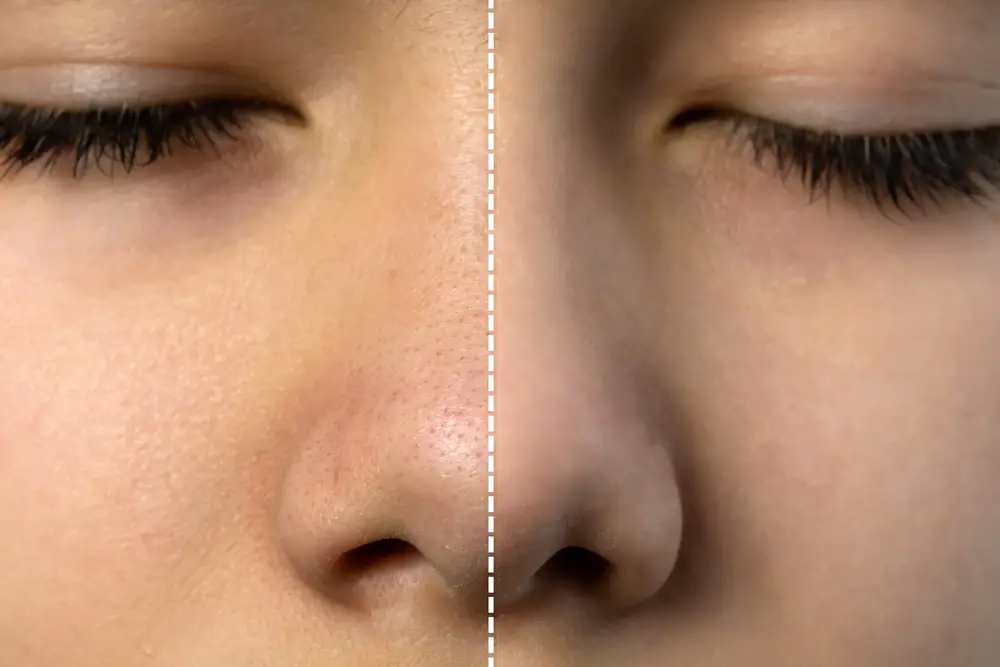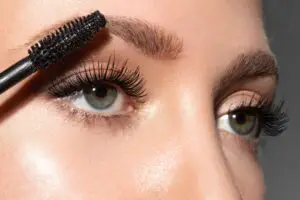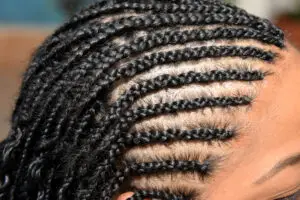Have you ever applied makeup and noticed that it tends to settle into your pores, creating an uneven and unflattering appearance? If so, you’re not alone. Many people experience this issue, and it can be disheartening when you’re trying to achieve a flawless look.
In this article, we will explore the reasons why makeup settles into pores and offer some helpful tips on how to prevent it from happening.
One of the main culprits behind makeup settling into pores is the size and visibility of the pores themselves. Large and open pores can act as a magnet for makeup, causing it to sink in and create an uneven texture on the skin. Factors like genetics, age, and skin type can all contribute to the size of your pores. Additionally, improper skincare and makeup application techniques can exacerbate the problem.
Another reason makeup may settle into your pores is the use of products that are not suitable for your skin type. For example, if you have oily skin and use makeup with a heavy, oil-based formula, it can further clog your pores and make them appear more prominent.
On the other hand, if you have dry skin and use a product that is too mattifying, it may emphasise the appearance of your pores. Understanding your skin type and choosing appropriate products can help reduce makeup settling and give you a smoother appearance.
Understanding Pores
Role of Pores
Pores are small openings on the skin’s surface that allow sweat and sebum (the skin’s natural oil) to reach the surface. These openings serve several important functions:
- Regulating body temperature: Pores release sweat, which evaporates and cools the body down when it overheats.
- Moisturising the skin: Sebum is crucial for maintaining the skin’s natural moisture barrier, keeping it soft and supple.
- Protecting the skin: Pores help in flushing out toxins, dead skin cells, and pollutants from the surface of the skin.
Types of Pores
There are two main types of pores in the skin:
- Sweat pores: These pores release sweat and are found all over the body. They are usually too small to be visible to the naked eye.
- Oil pores: These pores release sebum and are found primarily on the face, neck, chest, and back. Oil pores are typically larger than sweat pores and can be more visible, especially when they become clogged or enlarged.
Oil pores can be further classified into three sizes:
- Small pores: These pores are barely visible and usually don’t cause cosmetic concerns.
- Medium pores: These pores are somewhat visible but still considered to be within a normal range.
- Large pores: These pores are significantly visible and can be a concern for some individuals.
The size and visibility of pores can vary depending on factors such as genetics, age, and skincare habits.
Makeup and Pore Settling
Factors that cause makeup to settle in pores can be remembered with the acronym “TIPS”:
- Texture: If your skin’s surface is uneven or rough, makeup can collect in the crevices, including enlarged pores.
- Incompatibility: Using makeup products that are not suited for your skin type (e.g., using an oil-based foundation on oily skin) can cause them to settle in pores.
- Powders: Overusing powders or using them with a heavy hand can accentuate pores and make them more noticeable.
- Sebum: Excess sebum production can cause makeup to break down and settle in your pores, making them appear more prominent.
To prevent makeup from settling in your pores, consider these strategies:
- Adopt a consistent skincare routine, including cleansing, exfoliating, and moisturising.
- Choose makeup products that are formulated for your skin type.
- Use a matte primer before applying makeup to create a smoother surface and help absorb excess oils.
- Apply makeup with a light hand, using tools such as brushes or sponges to blend it evenly.
- Consider using non-comedogenic, oil-free makeup products that won’t clog your pores.
Makeup Settling in Pores
Makeup settling in pores is a common issue experienced by many individuals. In this section, we will explore the causes and implications of makeup settling in pores.
Causes
There are a few key factors that can lead to makeup settling in your pores. These include:
- Type of makeup: Some makeup formulas are more prone to settling in pores than others. Heavier, thicker makeup may be more likely to settle, whereas lightweight, breathable formulas are less likely to do so.
- Skin type: Oily skin may contribute to makeup settling in pores. Excess oil can mix with the makeup, causing it to slide into and accumulate in the pores.
- Application technique: How you apply your makeup can also play a role. Overloading your brush or sponge with product and using a heavy hand can lead to makeup settling in pores.
- Priming and setting: Skipping primer and setting products may increase the likelihood of makeup settling in pores. Primers can help create a barrier between your skin and makeup, while setting products can help keep makeup in place.
Implications
Makeup settling in pores can result in a few unwelcome outcomes:
- Uneven makeup: When makeup settles into your pores, it can create an uneven appearance, with certain areas of your face appearing patchy or textured.
- Clogged pores: Makeup settling in pores can lead to clogged pores, causing breakouts or acne flare-ups.
- Enlarged pores: Over time, makeup settling in your pores may contribute to the appearance of enlarged pores.
- Difficulty removing makeup: When makeup settles deep into your pores, it can be challenging to remove it completely, even with thorough cleansing.
To minimise the occurrence of makeup settling in pores, ensure you choose lightweight, non-comedogenic makeup products, properly prep your skin, and use light-handed application techniques. Additionally, always cleanse your skin thoroughly at the end of the day to remove all traces of makeup.
Proper Skin Preparation
Cleansing
It’s essential to start with clean skin before applying makeup. Use a gentle cleanser specifically tailored to your skin type (oily, dry, or combination).
For best results, wash your face using lukewarm water to dissolve any dirt, excess oil, and makeup residue. Remember to avoid using hot water as it may strip your skin of its natural oils.
Exfoliating
Exfoliating your skin is an integral step in proper skin preparation. This process helps to remove dead skin cells on the surface, which can cause makeup to settle unevenly or accentuate pores.
Aim to exfoliate one to two times a week using a gentle exfoliating product or tool. Be cautious not to over-exfoliate, as this may cause irritation.
Here are some exfoliation methods:
- Physical exfoliants: Scrubs with granules or beads that mechanically remove dead skin cells.
- Chemical exfoliants: Products containing acids (like AHA or BHA) that help to dissolve dead skin cells.
Moisturising
Once your skin is clean and exfoliated, it’s crucial to apply a suitable moisturiser to help maintain hydration and create a smooth canvas for makeup application. Doing so will prevent dry or flaky patches, allowing makeup to adhere more evenly.
Makeup Products and Techniques
Primers
Primers are essential for creating a smooth canvas before applying makeup. They can help minimise the appearance of pores and prevent makeup from settling into them. To choose a suitable primer:
- Look for a silicone-based primer, as it fills in pores and fine lines effectively.
- Apply a pea-sized amount on your fingertips and gently pat it onto your skin, focusing on areas with enlarged pores.
Foundation and Concealer Tips
The right foundation and concealer can make a significant difference in preventing makeup from settling into pores. Follow these tips for best results:
- Opt for a foundation with a matte or semi-matte finish, as these products provide more coverage and help minimise the appearance of pores.
- Use a foundation brush or a damp sponge for application, as these tools provide a more even and seamless finish.
- When applying concealer, choose a product that matches your skin tone and apply it with a small, flat brush. Pat the product into the skin rather than rubbing.
Powder Application Techniques
Powder is essential for setting makeup and preventing it from creasing or settling into pores. For an effective powder application:
- Use a translucent loose powder that closely matches your skin tone.
- Apply the powder with a fluffy powder brush, gently tapping off excess powder before applying it onto your skin.
- Press the powder onto your skin, rather than sweeping or buffing it, to ensure it sets your makeup without disturbing the base.
By using the right makeup products and techniques, you can minimise the appearance of pores and prevent makeup from settling into them. Give these tips a try for a more flawless and long-lasting makeup look.
Additional Tips
Regular Skincare Routine
One essential tip to prevent makeup from settling into your pores is to establish a regular skincare routine. The key components of an effective skincare routine include:
- Cleansing: Gently clean your face twice a day, in the morning and evening, to remove dirt, oil and makeup.
- Exfoliating: Use a mild exfoliator once or twice a week to slough off dead skin cells and reduce the appearance of enlarged pores.
- Moisturising: Apply a lightweight, non-comedogenic moisturiser to keep your skin hydrated and help maintain a smooth makeup application.
- Sun protection: Use a broad-spectrum sunscreen or a makeup product with SPF during the day to shield your skin from harmful UV rays.
Choosing the Right Makeup Products
Selecting suitable makeup products for your skin type can significantly impact how well your makeup stays on your skin. Consider the following factors while choosing makeup products:
- Primer: Opt for a pore-minimising primer to create a smoother surface and reduce the visibility of pores before makeup application.
- Foundation: Choose a foundation with a matte or semi-matte finish that is suitable for your skin type. Look for non-comedogenic, oil-free and long-wearing products that won’t clog your pores.
- Powder: Use a finely-milled setting powder to absorb excess oil, set your makeup and prevent it from seeping into your pores.
- Tools: Invest in high-quality brushes and sponges to ensure even product distribution and limit the chances of makeup settling into your pores.
By incorporating these additional tips into your beauty routine, you can significantly reduce the likelihood of makeup settling into your pores and achieve a flawless finish.

I’m Jennifer a beauty and wellness expert. I believe in promoting a sustainable and healthy lifestyle from within. Helping people feel good is my passion; whether it’s teaching yoga or offering skincare advice.







